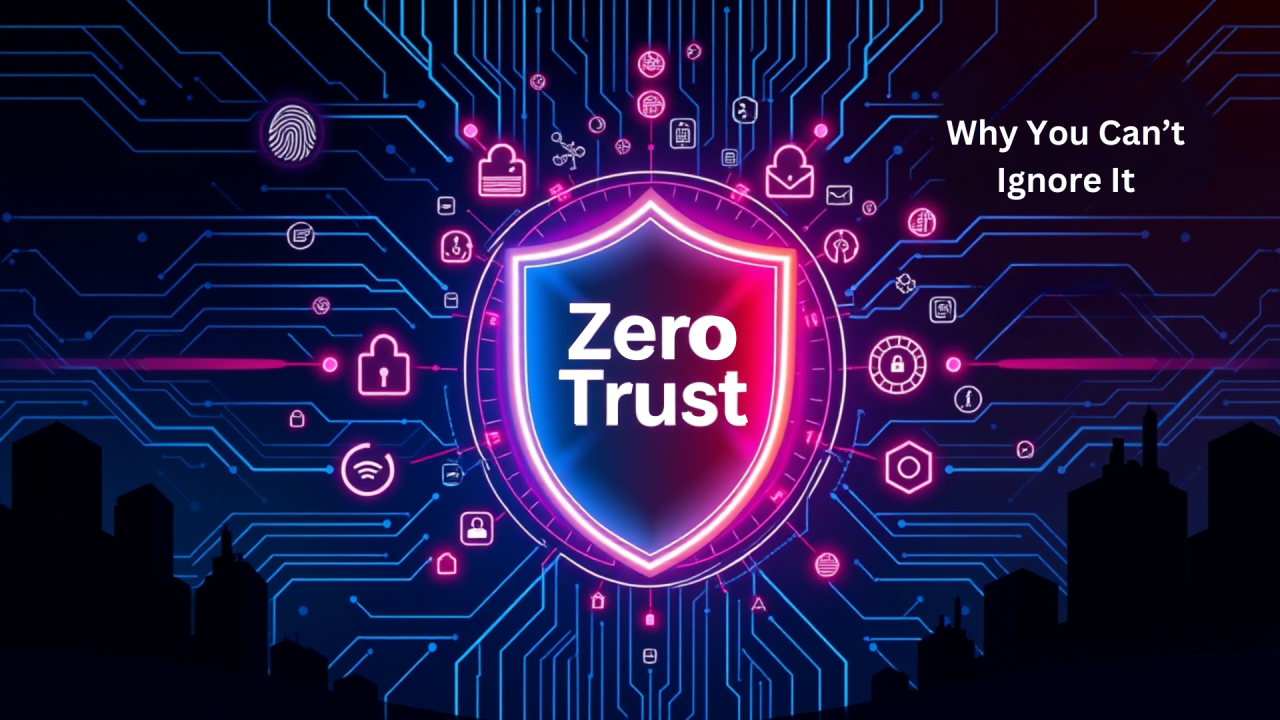Zero Trust Security: Why SMBs Can’t Afford to Ignore It
 Donald Betancourt
Donald Betancourt
Cyber threats are escalating, and small to medium-sized businesses (SMBs) are prime targets. Many business owners still believe, “We’re too small for hackers to care about.” But the truth is:
🔹 43% of cyberattacks target SMBs.
🔹 60% of those businesses shut down within six months of a breach.
Why? Traditional security models are outdated and ineffective. The old “trust but verify” approach? Hackers exploit it with ease.
That’s where Zero Trust Security comes in—a modern cybersecurity framework built on a single principle: Trust no one. Verify everything.
🔍 What Is Zero Trust Security?
Unlike traditional security models that assume everything inside the network is safe, Zero Trust assumes nothing is safe—not employees, not devices, not even the office Wi-Fi. Every access request must be verified.
🔹 Core Principles of Zero Trust
✅ Never Trust, Always Verify – Every user, device, and request must be authenticated.
✅ Least Privilege Access – Employees only get the access they need—nothing more.
✅ Micro-Segmentation – Networks are divided into isolated zones to prevent lateral movement of threats.
✅ Continuous Monitoring – AI-powered security tools detect suspicious activity in real time.
✅ Secure Every Connection – Whether remote work, cloud access, or internal systems, every login is treated as a potential threat.
🚨 Why SMBs Must Implement Zero Trust
Many SMBs assume cybersecurity is a “big business problem.” It’s not.
1️⃣ Insider Threats Are a Major Risk
SMBs often trust their employees to follow security best practices—but human error is a leading cause of cyber incidents. Over 30% of breaches originate from insider threats.
Some common scenarios:
🔺 An employee clicks on a phishing email—malware spreads.
🔺 A weak, reused password gets cracked by hackers.
🔺 A lost or stolen laptop exposes sensitive company data.
Zero Trust mitigates these risks by enforcing strict access controls and verification processes.
2️⃣ Data Breaches & Ransomware Are Costly
The average cost of a data breach is $4.45 million—a financial disaster for most SMBs.
With Zero Trust:
🔒 Compromised credentials? Useless without multi-factor authentication (MFA).
🔒 Malware infiltration? Micro-segmentation prevents it from spreading.
🔒 Suspicious activity? AI-driven security tools stop attacks before they escalate.
3️⃣ Remote Work & Cloud Applications Create Security Gaps
The shift to remote and hybrid work has expanded the attack surface for cybercriminals.
Instead of relying on outdated VPNs and “trusted networks,” Zero Trust secures every connection, allowing employees to work securely from anywhere.
4️⃣ Compliance & Cyber Insurance Require Stronger Security
Regulations like GDPR, HIPAA, and PCI-DSS require businesses to safeguard sensitive data.
✅ Zero Trust simplifies compliance by enforcing strict security controls.
✅ Cyber insurers are demanding stronger defenses—Zero Trust can help lower insurance costs.
📌 How to Implement Zero Trust
🔹 Step 1: Identify critical assets—determine which data, applications, and systems need the highest security.
🔹 Step 2: Strengthen identity & access—use MFA, role-based access control (RBAC), and passwordless authentication.
🔹 Step 3: Monitor continuously—deploy AI-driven security tools to detect threats in real time.
🔹 Step 4: Secure remote work & cloud applications—replace VPNs with Zero Trust Network Access (ZTNA).
🔹 Step 5: Test & improve—conduct regular security audits and attack simulations to identify vulnerabilities.
🚀 Zero Trust Isn’t the Future—It’s the Present
Cyber threats are constantly evolving, and SMBs can’t afford to wait. Companies that implement Zero Trust today will strengthen their defenses, protect their data, and build a resilient security-first business.
Many businesses are already making the transition, learning from past breaches and adopting AI-driven security, Zero Trust frameworks, and cloud security enhancements.
A great place to start? Experts like AI Cyber Experts provide insights on implementing Zero Trust, fortifying cloud security, and staying ahead of cyber threats.
At this point, the question isn’t “Should we implement Zero Trust?”—it’s “How soon can we start?” 🚀
Subscribe to my newsletter
Read articles from Donald Betancourt directly inside your inbox. Subscribe to the newsletter, and don't miss out.
Written by

Donald Betancourt
Donald Betancourt
"I'm Donald Betancourt , a tech writer and enthusiast sharing insights on cybersecurity, digital innovation, and tech tips for navigating the digital world."